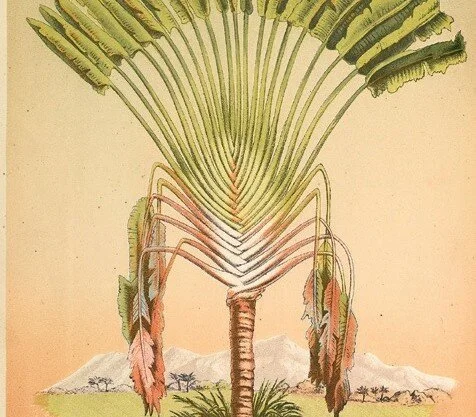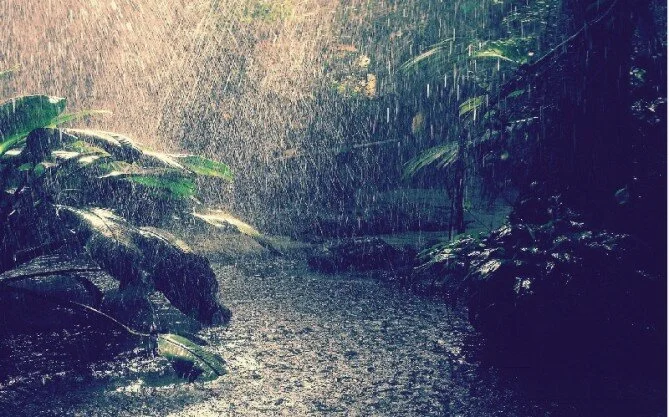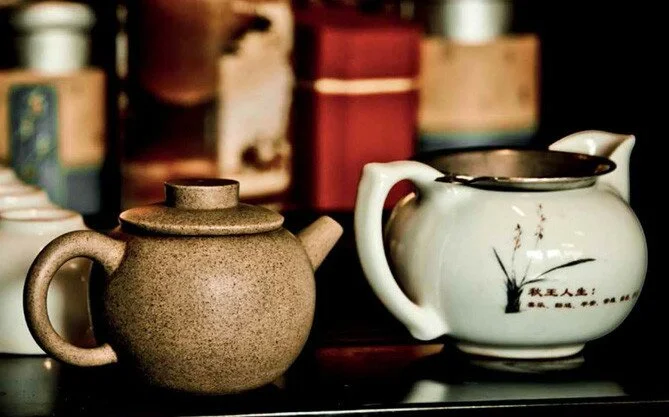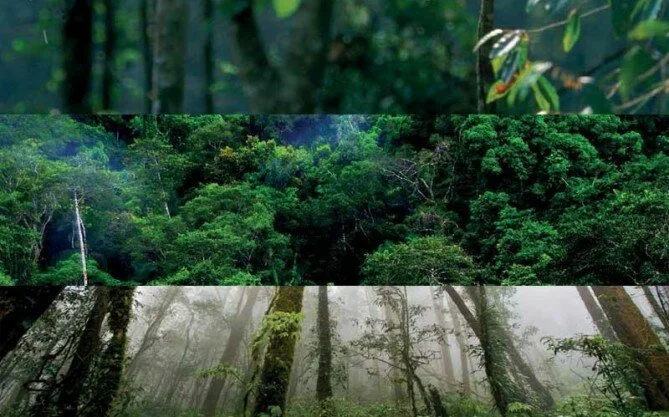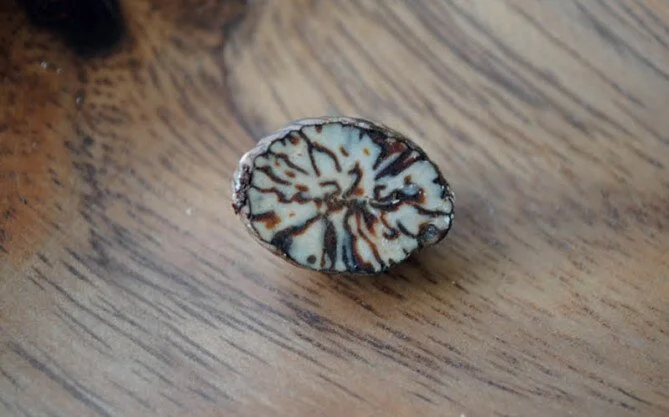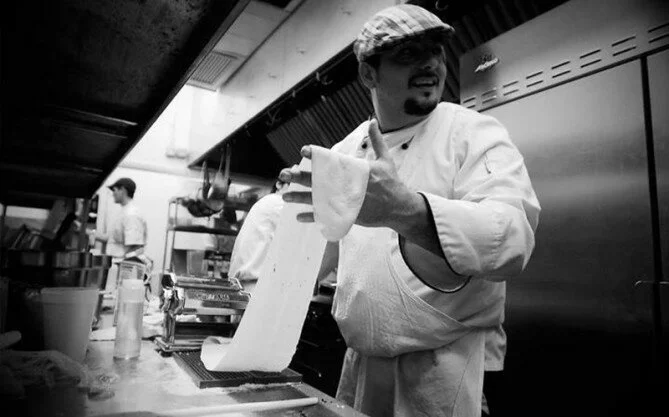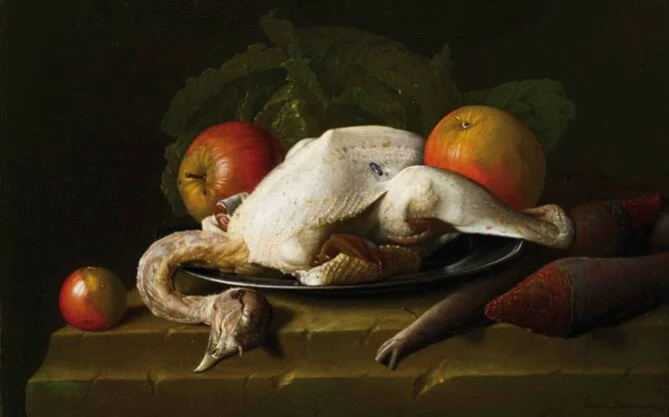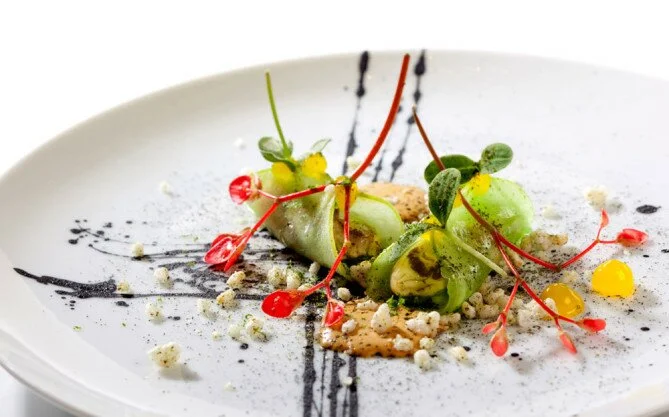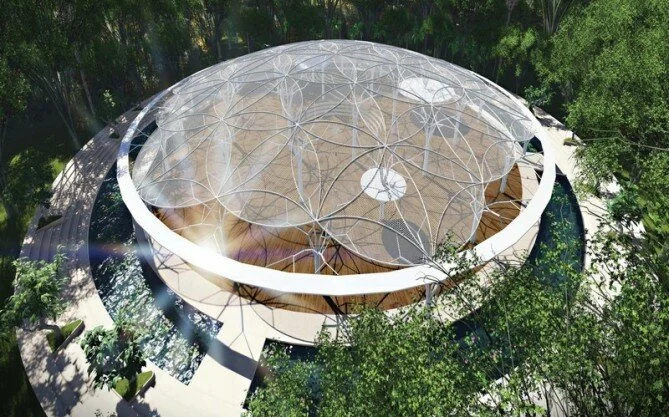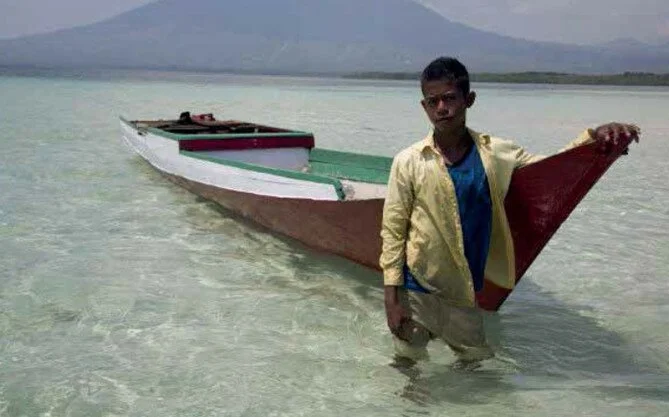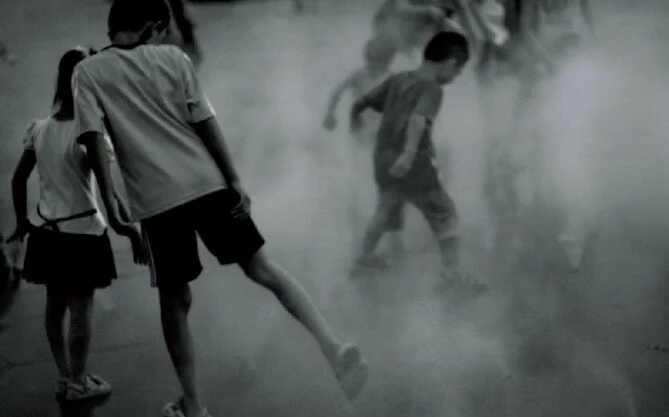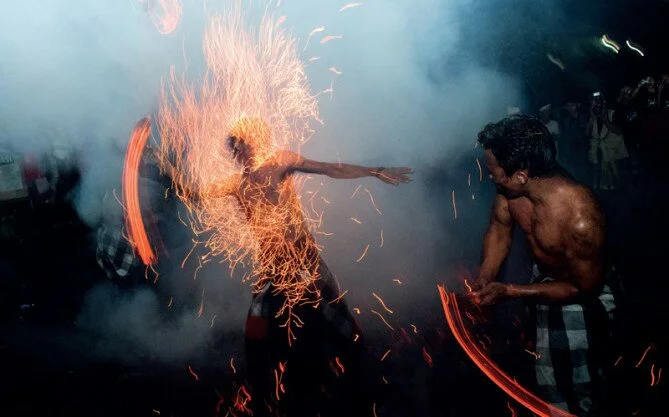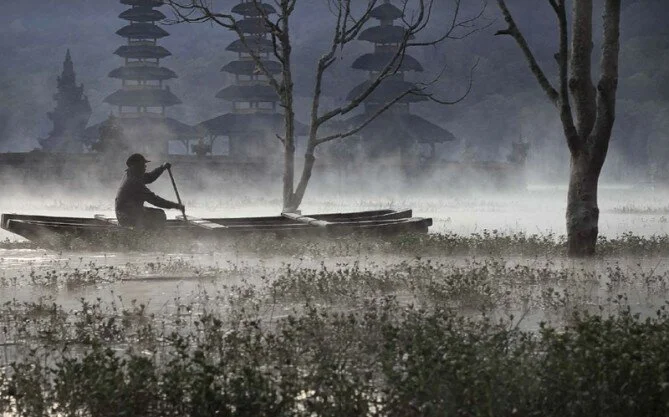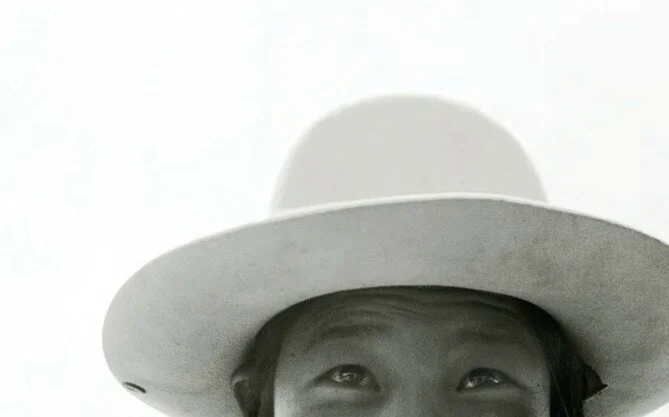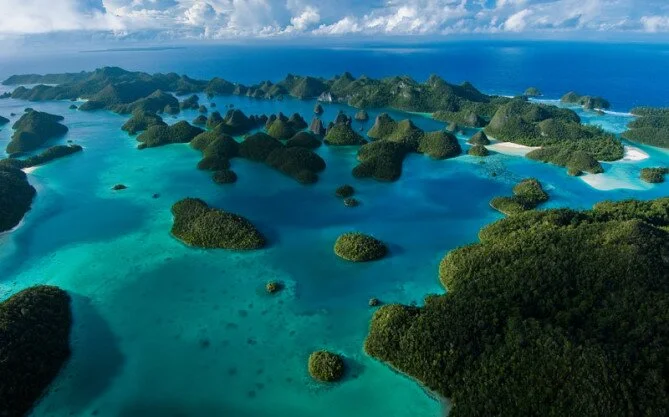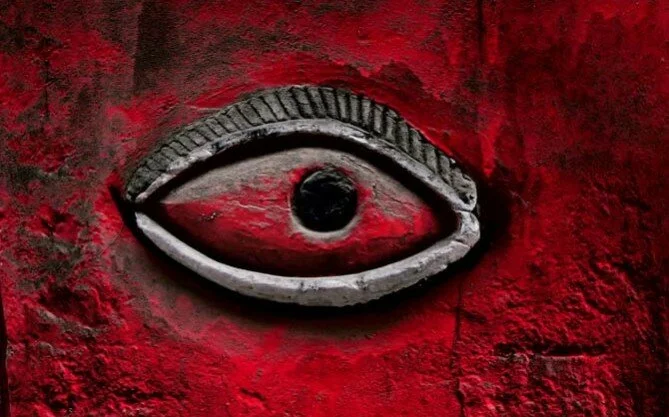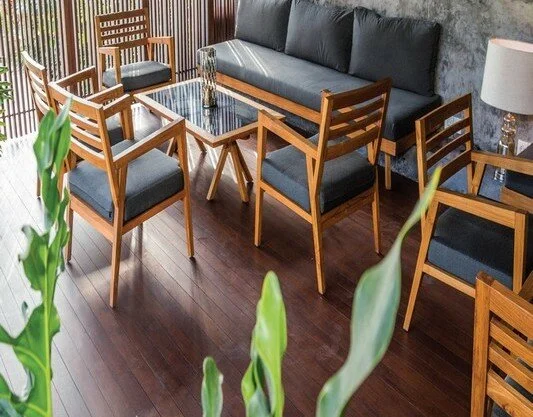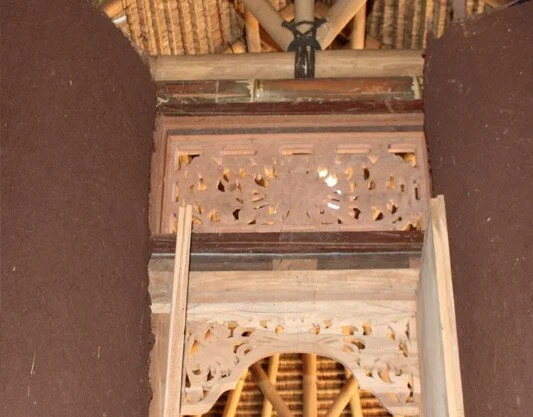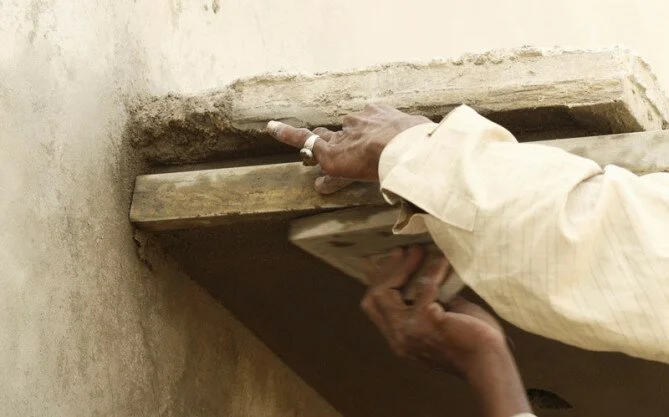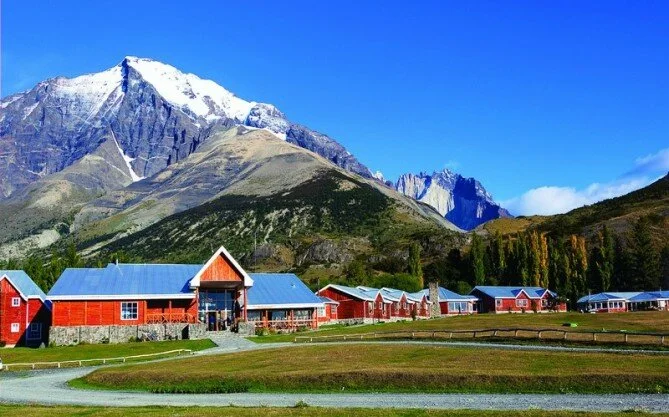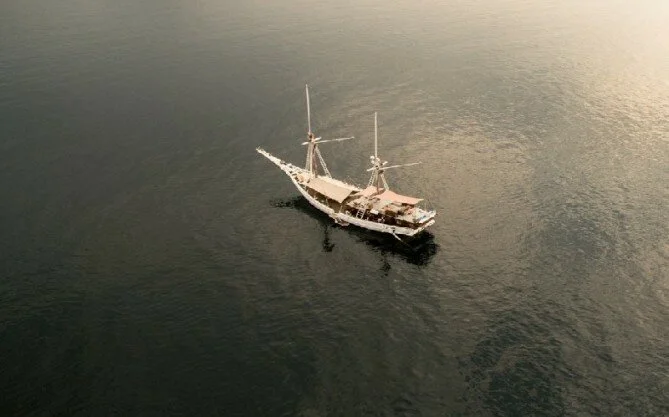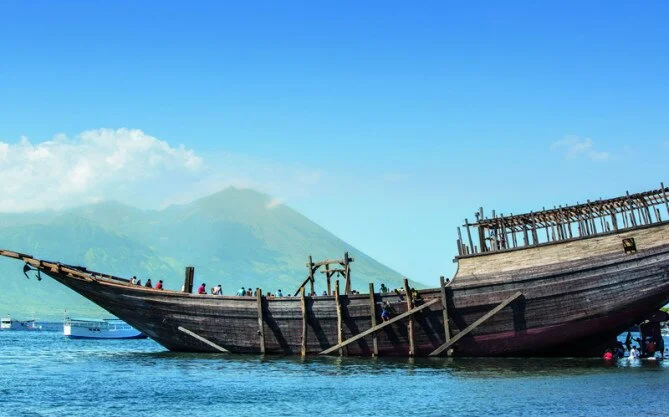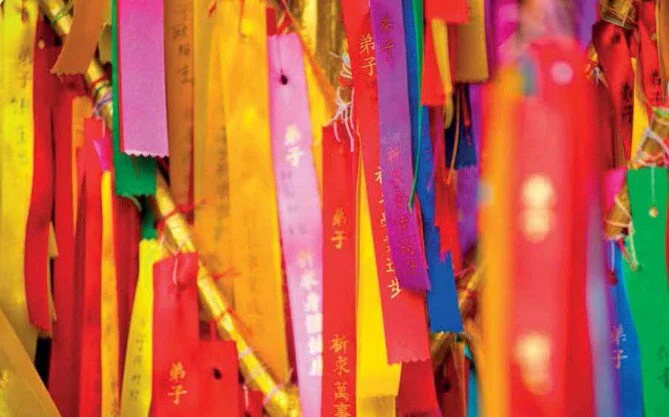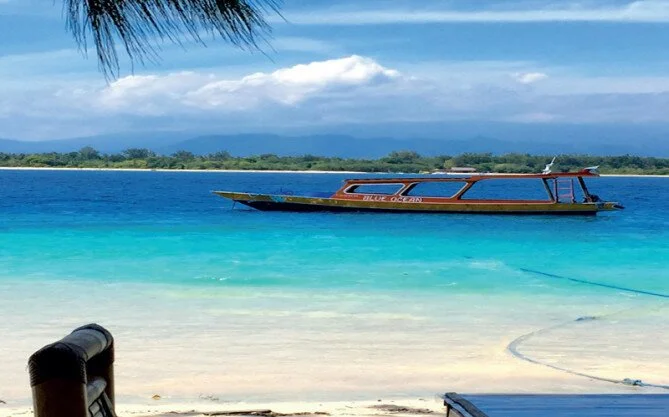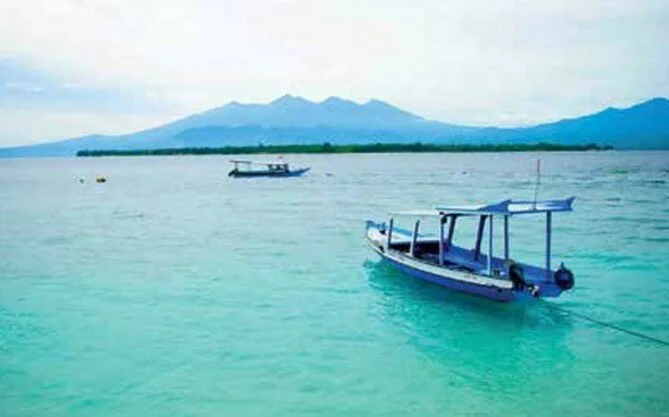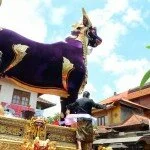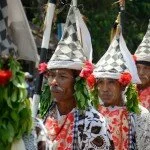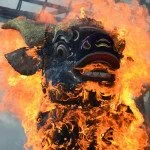The Balinese Hindus believe that only through the purification of fire can the soul be released from this earth on its passage into the hereafter. The island is therefore well known for its elaborate cremation ceremonies, in particular those of the royal courts.
I’m at Puri Saren Agung – Ubud’s Royal Palace, and the place is buzzing with activity, reminiscent of a scene from a storybook. The main courtyard is filled with builders, carpenters and artists. Men with sarongs hitched above their knees are half-way up a giant ramp, wrapping white paper around its bamboo supports, while others shout directions. Under the shelter of a temporary canopy, painters are adding colour to the gums, teeth and bulbous eyes of a ‘Boma’ (protector spirit) carving, while another group is applying the finishing touches to a shrine. The courtyard floor is littered with slithers of bamboo, paper and blocks of wood. The atmosphere is busy, noisy and jovial. Yet, towering outside the palace gates, encased in a bamboo scaffold, is the timber framework of a massive cremation tower.
It’s only nine days since the death of Tjokorda Istri Sri Tjandrawati. She was the wife of Tjokorda Gde Sukawati, ‘Penglingsir’ (leader of the palace). Sadly, she passed away on October 14th at the age of 59 following a battle with cancer. Her body lies in state in one of the palace pavilions awaiting a series of ceremonies, the most magnificent being the ‘Pelebon’ or cremation ritual.
The preparation for a ceremony of this scale and splendour calls for a colossal amount of labour. A royal cremation normally takes two to three months to organise but due to pressure in the ritual calendar, the family has decided to schedule it for November 1st. The event is therefore amazingly being put together in a mere 15 days with some 800 workers coming to the palace daily to help with the countless tasks comprised within this mammoth production. The two major props for the ceremony will be the 25-metre-high ‘bade’ cremation tower and the 7.5-metre-tall lembu bull-buffalo sarcophagus; each will be built upon a platform and constructed of bamboo, wood, paper and other richly-coloured materials.
Just one week later, I’m back at the Palace. It’s the day of the cremation, the sun is beating down, and the giant wooden structure has been transformed into an astounding, multi-hued, nine-tiered winged tower that glitters with gold. Next to it is the bull, resplendent in a coat of purple velvet. A cremation ceremony is always a grand public spectacle to which everyone is welcome, so I’m just one of the many thousands who have turned out to watch. The road has been closed to vehicles, electricity along the route has been shut down and power cables dismantled to prevent them from blocking the bade. An hour before the procession is about to begin, hundreds of people are already crowded into the upper, open-air floors of the market building, with many others gathered on neighbouring rooftops. On the street below, one of Ubud’s fire engines is on standby.
I take my place at a restaurant where some friends have booked a table. We, at least, are guaranteed to get a comfy seat and a front row view. Surprisingly on schedule, we hear the sound of gongs and drums; the procession is approaching, and without pausing to step into my sandals, I race out onto the street. Around 2,000 men from 20 local ‘banjar’ (traditional communities) are taking it in turns to carry the lembu and the 5-ton bade and moving at speed, turning and stopping in unison on the 800-metre journey to the cremation site at Pura Dalem Puri Peliatan.
The road underfoot is burning my soles, so I push my way back through the crowds, replace my sandals, grab my bag, give up my seat at the restaurant, and join the throng, where I am fuelled by an extraordinary rush of adrenaline. Somehow, I have become part of the procession, and I’m marching alongside the gamelan orchestra. Reaching the cremation ground, I fear that there won’t be any hope of getting close to the action. That is until I realise that most of the spectators have taken their positions at the sides, shaded from the intense heat of the sun. The bull is cut free from its bamboo supports and lifted onto the concrete cremation platform. The coffin is then transported from the tower, via another giant ramp that has been erected onsite, and borne around the ground in a procession flanked by family members and led by women carrying offerings on their heads. After this, accompanied by prayers and holy water, the body is transferred into the sarcophagus, and a troupe of spear-carrying ‘Baris Katekok Jago’ warrior dancers – looking marvellous in their black & white poleng cloth costumes, completed with conical hats, leaves and red hibiscus flowers – form a barefoot guard of honour on the searing hot paving stones in front of the bull.
More searing heat follows when, at last, the fire is lit. The sarcophagus is swiftly consumed by a blaze of orange flames and the body burnt to ashes, to be later cast out to sea off Matahari Terbit Beach in Sanur.
With this final ceremony of the day, the spirit of Tjokorda Istri Sri Tjandrawati is free.
Rachel Love

